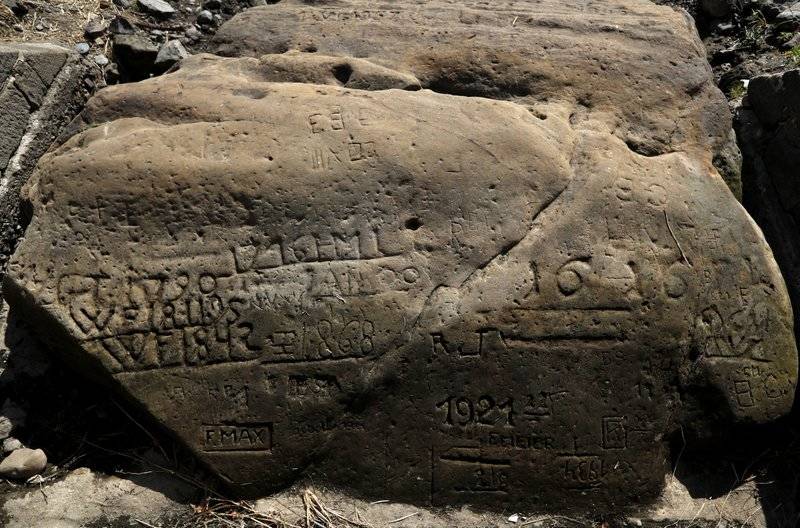For centuries, these stones have warned people that hard times are on the horizon and their reappearance now might be cause for alarm.

Petr David Josek/AP PhotoOne of the “hunger stones” seen in Děčín, Czech Republic on Thursday August 23, 2018.
The drought which has been ravaging Europe all summer has uncovered several startling artifacts, not the least of which are these ominous carvings in the Czech Republic, known as “hunger stones.”
On August 23, the Associated Press reported that boulders know as “hunger stones” have resurfaced in the Elbe River. The stones are located in the town Děčín in the northern part of the Czech Republic.
Over a dozen of the stones are now visible thanks to the prolonged drought in Central Europe which has caused the river’s water levels to drop to extremely low levels. In the past, whenever the water levels dropped low enough to see the stones, citizens would etch the date into the stone to mark the drought.

Wikimedia CommonsA hunger stone in the Elbe River in Děčín.
But dates were not the only things that locals cautioned in their carvings. For hundreds of years, the “hunger stones” were used as a means to warn people of the hardships that would follow because of the drought. According to a 2013 study on droughts in the Czech Republic, one of the stones “expressed that drought had brought a bad harvest, lack of food, high prices and hunger for poor people.”
Another one of the stones featured a darker message, saying in German, “When you see me, weep.”
The study also added that before the start of the 20th century, the stones had been marked numerous times.
“Before 1900, the following droughts are commemorated on the stone: 1417, 1616, 1707, 1746 1790, 1800, 1811, 1830, 1842, 1868, 1892, and 1893,” the study read.
The rocks and their haunting messages from the past have become a tourist attraction in the city, according to NPR. The stones are one of the oldest hydrological landmarks in all of Central Europe, which has caused tourists to flock to the city of Děčín.

Petr David Josek/AP PhotoPeople visiting the “hunger stones” in Děčín, Czech Republic.
A local Děčín tourist site says that the area was dammed in 1926, which has made the rocks appear more often. However, it is the dropping water levels from the draught that most recently caused the stones to appear. According to the Local, the Elbe River is at the lowest level in over half of a century and as of early Aug. was just centimeters away from its lowest ever recorded level.
The harsh conditions and receding water levels caused by Europe’s drought this summer have unearthed much more than just the “hunger stones.”
According to the Local, the Elbe River’s record-breaking low water levels also allowed several unexploded World War II bombs to be found in the river earlier this month.
The effects of the drought are not isolated to just Germany. In July 2018, a massive, 4,500-year-old Irish Henge was discovered after the normally plush agricultural lands wilted enough to reveal the structure. Also, earlier this month in England, the possible childhood home of St. Oliver Plunkett, the last Roman Catholic martyr to die in England, was discovered when extremely hot and dry temperatures revealed the outline of the house.
These “hunger stones” serve as an obvious reminder that droughts like the one Europe faces now are not unusual occurrences. However, one has to wonder if the stones’ most recent exposure is truly a sign of darker times ahead.
After reading about the hunger stones, read about the drought in Zimbabwe that caused officials in the country to sell off their wild animals. Then discover the shade balls California used to try and help solve its drought.





